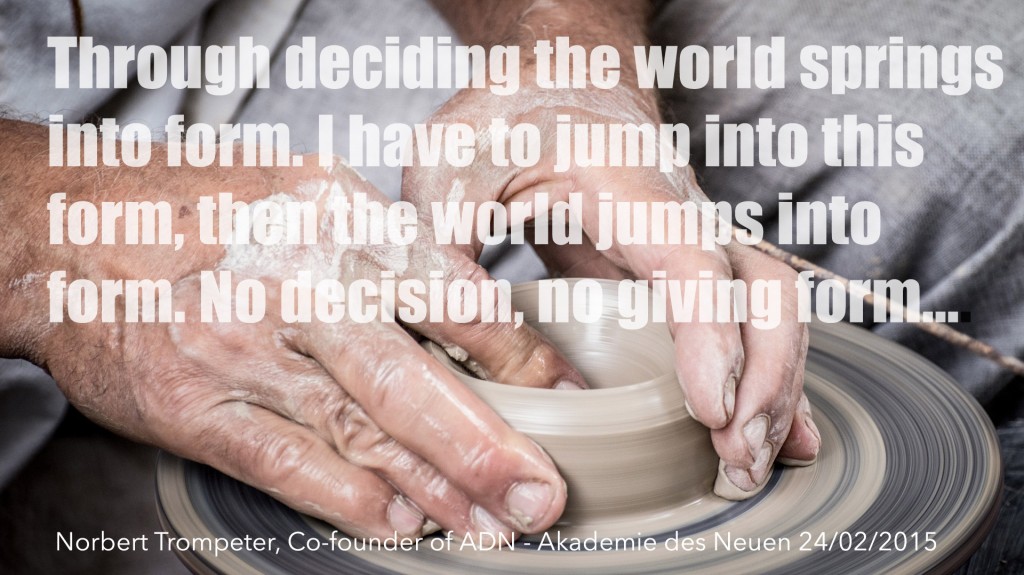Louis Sullivan, also called the “father or of skyscrapers” coined a famous and influential concept for generations of architects in his article «The tall office building artistically considered» from 1896:
“FORM follows FUNCTION.”
This became a principle associated with modern architecture and industrial design in the 20th century. The principle is that the shape of a building or object should be primarily based upon its intended function or purpose.
I suggest the contrary based on considerations of postmodern philosophy, cognitive neuroscience and perspectivism:
“FUNCTION follows FORM.”
I am deeply convinced that storytelling does comes first and therefore form is giving space for decisions, thus for function. We create first “vessels”, spaces through spatial design where functions then are performed, situations staged, games played. We create playgrounds and rules. The practice inside of these forms creates our world, not the intended function, as the function may change, be altered, appropriated, forgotten, abused, renovated, marginalised, revitalized – something gets added – other things get substracted which have made the use of a building or a space for humans (or animals residing there).
(see featured pic) “Indem, dass ich mich entscheide, springt die Welt in die Form. Ich muss in die Form springen
und dann springt die Welt in die Form. Keine Entscheidung, keine Formgebung.”Norbert Trompeter, co-conspirator and co-founder of the ADN – Akademie des Neuen, 24/02/2015
Imagine a hall on a fair-ground where people can choose to sell cattle, drink beer, dance or congregate to form political debate and decisions. The form was first, opening options for functions, which you fill with symbols and meaning. This also may be applied for something as abstract as “mental space” – which can be viewed as an architecture for building our meaning, our storyworlds. The bricks or elements being our concepts and the sequence may be altered, creating pillars, caves or windows. What kind of story architecture is giving your life form? What do you do with it?
Can you change the doors or paths to build a new space or outfit it differently in lighting and pathways to other spaces for altering meaning? I think yes, it is the cultural technique of storytelling which creates forms and thus, meaning. Meaning which often serves a purpose, a function. In my view, there you may pinpoint the battleground of interpreting, forming and (re)building our world!
Reference:
Sullivan, Louis (1896) “The Tall Office Building Artistically Considered” Lippincott’s Monthly Magazine (March 1896)

